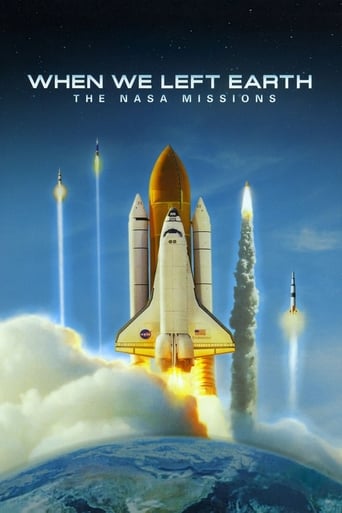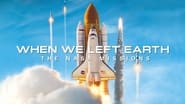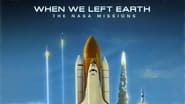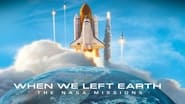antimatter33
This is one of a several "what we did then" historical retrospectives of the NASA human space flight program. In its favor, it includes interviews with Neil Armstrong himself, who was famously averse to such things, and even James McDivitt and Frank Borman, who are rarely seen. There is interesting footage of geology training and so on that will appeal to space buffs.However, the editing is done in the choppy and affected style of a rock music video, which quickly becomes extremely tiresome. The music is beyond awful, a mishmash of orchestral fake-dramatic boilerplate episodes, something like the trashy background sound of a video game. The narration is done in an irritatingly over-serious manner. Combined with the bad music, it is nearly impossible to get through this series without turning the volume off and just enjoying the views. Unfortunately, the best part of the series is hearing the astronauts in their own words, and you can't do that without slurping down the treacly music and Commander McBragg narration as well. Ultimately, this sinks the series, which is a shame.Some day, this material should be re-edited without much music, because none is needed, or at least, it should be kept to a bare and spare minimum. One wonders where they find the composers of this trash and how they manage to get themselves paid.Gary Sinese unfortunately also lacks the vocal authority for documentary narration. But that is a minor quibble.-drl
josey007
Overall, I thought "When We Left Earth" was a fantastic, excellent and amazing mini-series that I would be delighted to own on Blu-Ray DVD, if it weren't for those Swedish buccaneers. Nevertheless, the inclusion of so much color-footage shot by the astronauts themselves was clever and made for breathtaking viewing, and that's the selling point that will probably get me to fork out for the gen. discs. It wasn't all peaches- and-cream, however, and I was genuinely disappointed with the cursory treatment given to Apollo 1, which only received approximately four minutes of very bland, formulaic coverage. There was no imagery from any of the three Apollo 1 crew-members' funerals or memorials or anything heroic, and I believe the producers dropped the ball and missed the chance to jerk a bit of genuine contrived emotion out of us. Their decision not to was difficult to accept and is the only sore point for me in an otherwise-excellent miniseries.If it was the case that there simply was no video footage available from the funeral and interment of Gus Grissom, for example, my apologies. But if ever there was an appropriate forum in which to display such coverage/footage, it would've been here.
jjoseph202
Let me start out with the good stuff.This miniseries was good in that it captures, 30 to 50 years later, the thoughts and experiences of those who were there. The modern footage -- the interviews with the astronauts and flight controllers especially -- does what historical documentaries do best: captures the words and experience of those who were actually there. I especially liked the interviews with Gene Kranz, Jim Lovell, and -- of all people -- the nearly hermit-like Neil Armstrong.That said, the "HD" sequences are, by and large, limited by the resolution of the original (what a surprise), and calling them "HD" is a hyperbole at best, disingenuous at worst. So the Discovery channel's hype about digging stuff out of the vault and getting an HD-worthy presentation of this vintage footage is just that: hype. There are some priceless shots, like the slow-motion ground test footage of the explosively-jettisoned Mercury hatch. But, by and large, the "unearthed" footage is stuff we've seen before.What I detested most, though, was the U.S.-centric view of the writing. The script for the Skylab sequences would lead you to believe that the U.S. orbited the first space station. The Apollo 8 mission planning and execution was triggered by the placement of a Russian moon rocket on their launch pad, but this is overlooked.So, obviously, the "we" in "when we left earth", is Americans.A historical distortion, at best.
litefantastic
Every story has two halves: the material, and the way the teller tells it. In this case, though the end product was impressive, the Discovery Channel oversold this production to a point that bordered on inadvertent desecration. The storytelling itself was, all in all, very good (the fact that all the viewers know the ending is something that really couldn't be helped). However, I think the emphasis the Discovery people placed on the program's HD nature was silly. Most of the footage consists of either grainy, spotty film, or first generation video telefeeds that are so primitive I found myself impressed that they could work at all. The people of Earth were awed to see the twitchy, flickering image of Neil Armstrong on the moon in 1969. The "HD" billing the program got is something I can only attribute to the consumer zeitgeist of modern America.The second (and worse) mistake the Discovery Channel made was to air ads for the miniseries DURING the series BEFORE it had ended. I can't say why, but that really %*&&ed me off. Maybe it's just because I'd like to really bathe in the majesty of human existence for just a MOMENT without someone using it as a tool to sell me something. Yes, it's very nice that the single greatest artifact of human effort is now available on DVD and Blu-Ray at a discounted price. Get stuffed.And yet, marketing flaws aside, it really is an awesome story, and the people who made it did it well. I really was, as I had been promised, shown things I'd never seen before. I watched Richard Nixon talk to Niel Armstrong. I watched men use hardware supplies to innovate their way out of carbon dioxide poisoning. I watched the Challenger and the Columbia come down in chunks. I watched the Earth rise up from beyond the horizon of the Moon.I'm still amazed that this was all so recent that the principle characters are still alive, and to hear them talk was to feel the power. Niel Armstrong and Buzz Aldrin and the first President Bush and scores more spoke into the cameras of what they had seen, or done, or helped with. I actually realized that "the Establishment," as our rigidly organized government and its projects are often cynically called, was capable of miracles of its own.Bon voyage.




